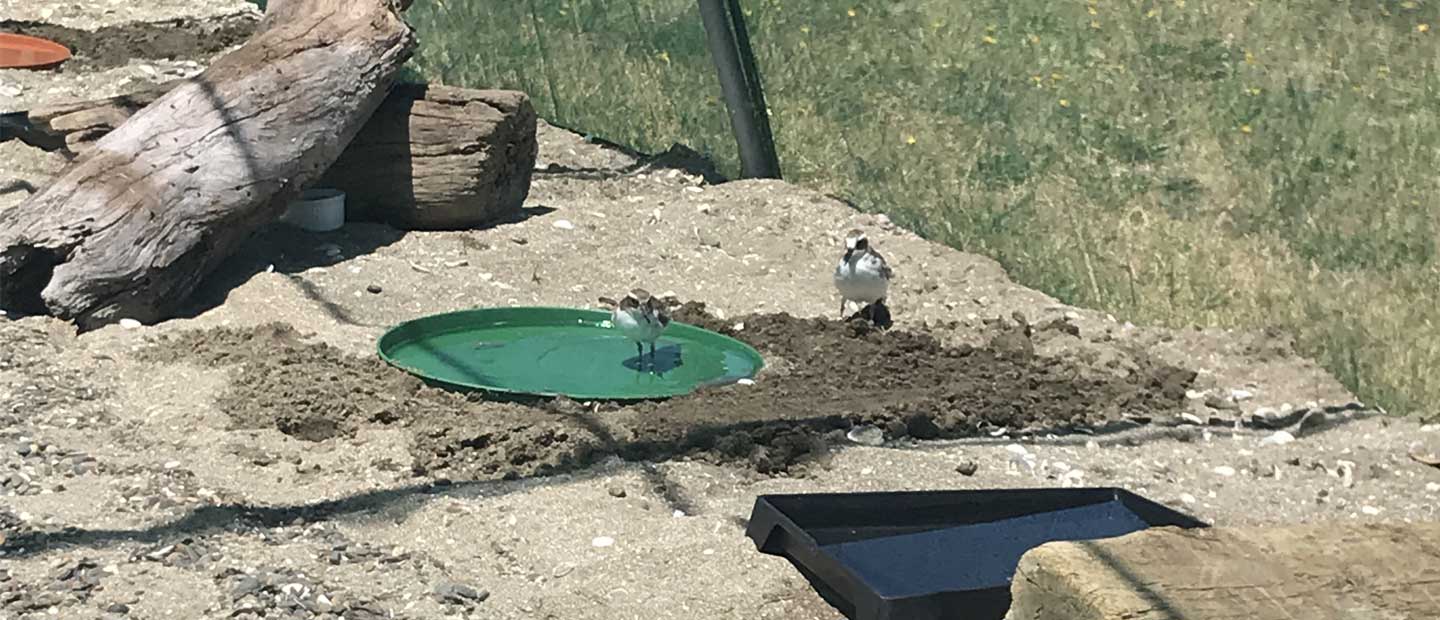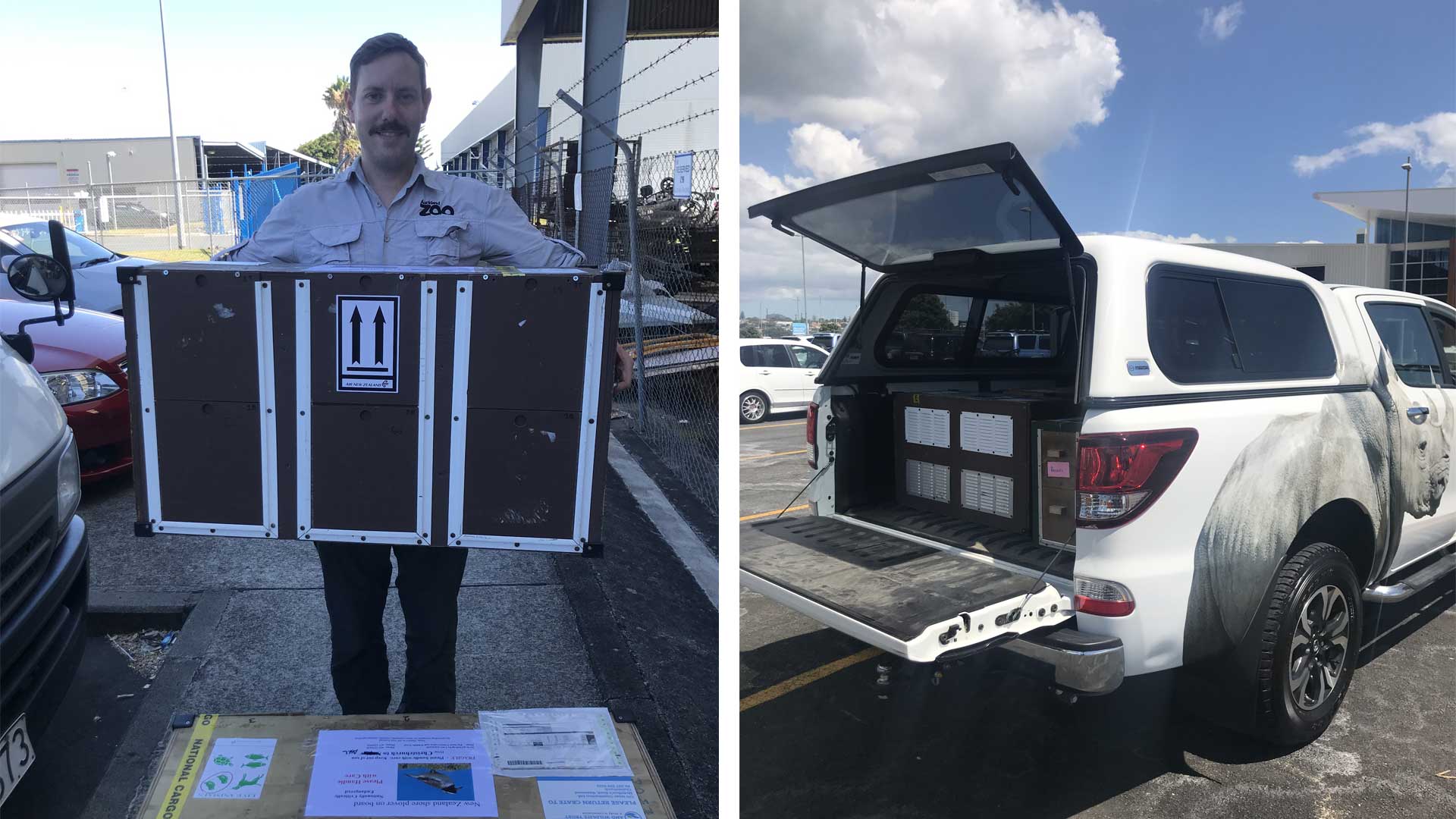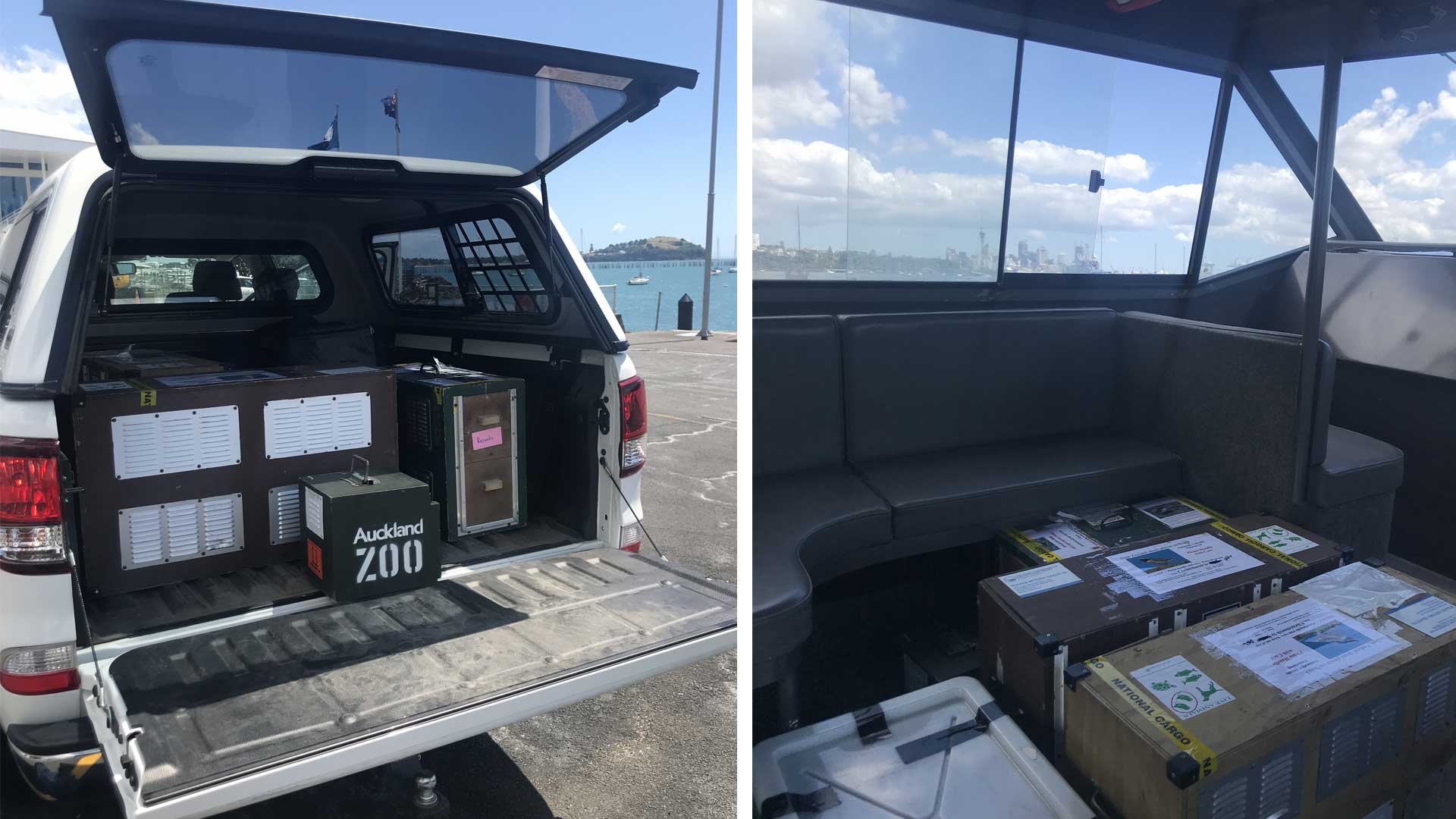When the young juvenile was ready to be returned to Motutapu Island, it coincided with the ‘soft release’ of another 22 New Zealand shore plovers that had been captive-reared at Pūkaha and Isaac Conservation and Wildlife Trust, meaning Auckland Zoo’s head of birds Carl Ashworth, had a slightly bigger job on his hands than anticipated. It involved a trip to the airport to collect the birds, a car trip with the birds, followed by a boat trip to the island, and then a week-long Motutapu stay to care for and monitor the plovers in their on-site soft-release aviary. Auckland Zoo bird keepers Suzie Keith and Sarah Anderson joined the efforts on Motutapu to care for them, involving twice daily feeds, and close monitoring to ensure they were eating and behaving normally and fit for release . After nearly two weeks, on Monday 18th February the aviary doors were opened, and the nationally critical birds were on their way to prosper, and hopefully contribute to their species. 22 birds may seem a small number, but it represents a 10% increase in the global wild population. Plovers still face many threats, even on predator-free islands, so there’s a long road ahead for those fighting to save this little known taonga of Aotearoa.




